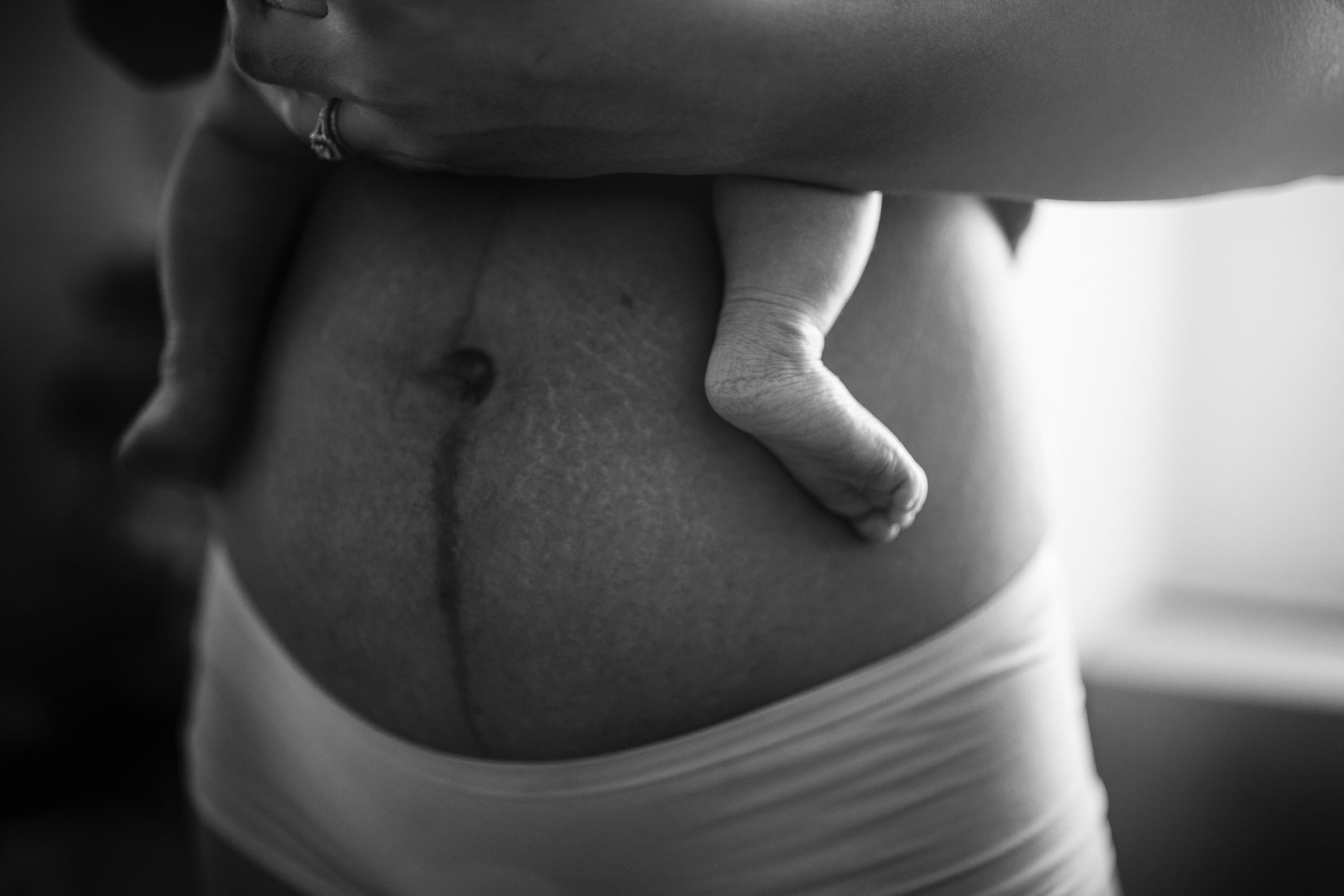For Caesarean awareness month our Myotherapist Stefanie shares her top tips for Caesarean Section Incision site care to help optimise healing and encourage healthy scar formation.
Fresh incision site care
Take care of the incision by keeping the surrounding area clean and not disturbing bandages that your care provider has applied.
Attend regular check-ups with your care provider.
Don’t be afraid to ask questions about the healing process, be curious!
After bandages come off and you can move around comfortably:
If you are comfortable, start to introduce your hand to the area by gently cupping or just resting your hand on top.
Gentle strokes to the surrounding area can start making you feel comfortable with touching that area again.
Self-massage such as stroking, gentle horizontal/vertical friction, gentle cross-friction and even picking up the soft tissue around the incision site is a fantastic way to manage and aid in the healing process of the incision site. Self-massage and how vigorous or softly it is done, mainly depends on the maturity of the scar/incision site - Avoid vigorous massage before your incision is completely healed (up to 6 weeks).
There is sufficient evidence suggesting that scar massage can help reduce symptoms of pain, itch as well as anxiety and depression.
Don’t forget!
Topical gels such as Strataderm and silicone tapes/bandages are very efficient in managing the appearance of the incision site. Silicone is the best option for treating new and old incision sites/scars.
Massaging the area daily with coconut oil or shea butter (choices are endless!) will help greatly!
Tip!
If you are afraid or feel that the area is sensitive to touch, bringing an electric toothbrush handle close to the incision site (above, under, to the sides) will help you desensitise and make it more comfortable to touch.
Remember to ask your care provider for additional information or clarification on scar formation, management, and improvement. Never let medical jargon get in the way!
Formation, Management with Silicone & Improvement
What happens to the tissue?
When the skin is injured, it goes into overdrive to heal itself. When this happens, the body’s healing mechanisms will often “over correct” resulting in an excessive production of collagen that can lead to abnormal/rough scarring.
During the formation of the scars, the epidermal layers of the skin will produce high levels of moisture in an attempt to hydrate the scar site. However, most of this moisture evaporates once it reaches the upper layer of the skin. This moisture loss triggers keratinocytes in the skin to produce collagen. Left unchecked, excessive collagen production can lead to abnormal/rough scarring.
How do we manage this with Silicone?
Silicone fully encapsulates the scar site, meaning that it completely covers the treatment site for even distribution of necessary moisture and maximum exposure to oxygen. Although the entire site is covered, silicone is semipermeable, allowing oxygen to enter while maintaining necessary moisture. This ideal healing environment at the upper layer signals keratinocytes to scale back the production of collagen, thereby preventing abnormal/rough scarring.
Improvement
Properly hydrated and oxygenated skin allows surrounding healthy tissue to better blend with scar tissue, resulting in a scar/incision site that is more natural in colour, softer and flatter overall. Silicone scar treatments normalises collagen synthesis and reduces irritation and redness. Silicone is completely non-toxic, safe, and easy to use, even on sensitive skin and children.
You can reach out to Stef with any questions of comments at stefanie@Mppp.com.au or via her Instagram @hearinghandswellness

